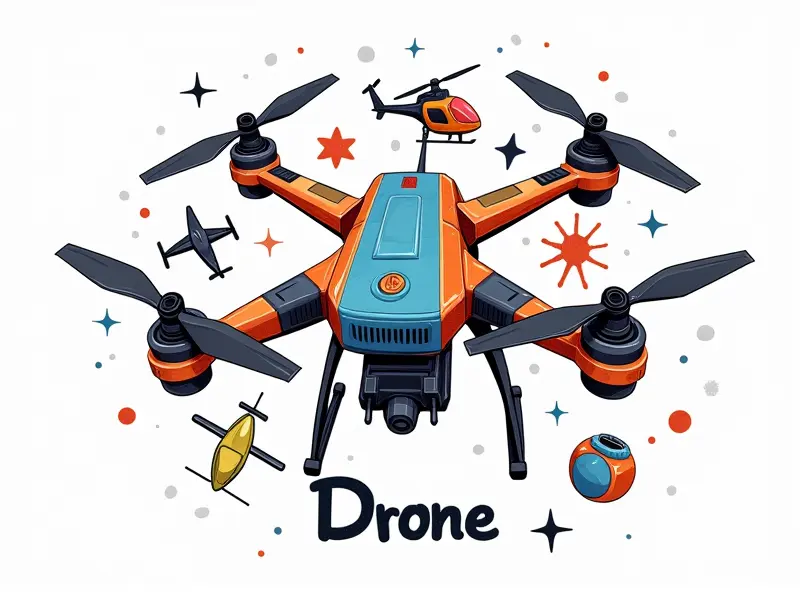What is the range of FPV video?

How Far Can FPV Go?
First-person view (FPV) technology has revolutionized the world of drone racing and aerial photography. The range of FPV video transmission plays a crucial role in determining how far you can fly your drone while maintaining real-time control over its movements. While the exact distance varies based on several factors, it's common for FPV systems to offer ranges from 100 meters to several kilometers under ideal conditions.
Understanding FPV Range Limits
The range of an FPV video transmission is limited by various technical constraints and environmental factors. The primary limitation comes from the radio frequency (RF) signal strength, which can be affected by obstacles such as buildings, trees, and even weather conditions. Additionally, the quality and power of your equipment play a significant role in determining how far you can transmit FPV video.
Factors Affecting FPV Signal Range
- Frequency Band: Higher frequency bands like 5.8 GHz offer better resolution but have shorter range compared to lower frequencies such as 900 MHz or 1.2 GHz.
- Antenna Type and Quality: High-gain directional antennas provide superior signal strength over long distances, while omnidirectional antennas are better for short-range applications.
- Line of Sight (LOS): A clear line of sight between the drone and the ground station is crucial. Obstructions can severely limit your range.
- Interference: Other RF devices, such as Wi-Fi networks or cellular phones, can interfere with FPV signals, reducing their effective range.
Optimizing FPV Camera Transmission
To get the most out of your FPV system, it’s essential to optimize every aspect of your setup. This includes selecting high-quality components and configuring them correctly for optimal performance:
Achieving Maximum FPV Flight Distance
- Upgrade Your Equipment: Invest in higher quality antennas, transmitters, and receivers designed specifically for long-range applications.
- Use High-Gain Antennas: Directional antennas can significantly enhance your signal strength over longer distances.
- Choose the Right Frequency Band: Depending on your needs, select a frequency band that offers both range and clarity.
Tips for Improving FPV Video Range
Here are some practical tips to help you extend the range of your FPV video transmission:
- Minimize Interference: Avoid flying near other RF devices and ensure that your equipment operates on a clean frequency band.
- Optimize Antenna Placement: Properly position your antennas to maximize their effectiveness. For example, mounting them vertically can improve LOS in urban environments.
- Use Repeaters: In some cases, placing repeaters strategically along the flight path can help extend the range of your signal.
FPV Drone Video Transmission Range
The range of FPV drone video transmission is a critical factor in determining how far you can fly and still maintain control over your drone. By understanding the technical aspects and implementing best practices, you can significantly enhance the distance at which you can transmit real-time video from your drone.
Increasing FPV Video Transmission Range
To increase the range of your FPV video transmission, consider the following strategies:
- Select High-Quality Components: Invest in high-quality transmitters and receivers designed for long-range applications.
- Employ Directional Antennas: Use directional antennas to focus signal strength over longer distances.
- Maintain Clear LOS: Ensure a clear line of sight between the drone and the ground station to minimize signal degradation.
Understanding FPV Video Signal Range
The range of an FPV video signal is influenced by several factors, including frequency band, antenna quality, environmental conditions, and equipment configuration. By understanding these elements, you can optimize your setup for maximum performance:
- Frequency Band Selection: Choose a frequency band that balances range with clarity.
- Antenna Configuration: Properly position high-gain antennas to maximize signal strength.
- Environmental Considerations: Avoid flying near sources of RF interference and ensure clear LOS.
Extend Your FPV Video Range Easily
Extending the range of your FPV video transmission can be achieved through a combination of equipment upgrades, strategic positioning, and environmental optimization. Here are some simple yet effective ways to enhance your FPV range:
- Upgrade Components: Invest in high-quality transmitters and receivers designed for long-range applications.
- Optimize Antenna Placement: Position antennas vertically or horizontally based on the environment you are flying in.
- Avoid Interference: Stay away from other RF devices to minimize signal degradation.
Common FPV Range Issues Solved
Facing issues with your FPV range? Here are some common problems and their solutions:
- Interference: Use a frequency analyzer tool to identify and avoid congested channels.
- Signal Degradation: Ensure clear LOS between the drone and ground station. High-gain antennas can also help mitigate this issue.
- Poor Quality Components: Upgrade to higher quality transmitters, receivers, and antennas designed for long-range applications.
Conclusion
The range of FPV video transmission is a critical aspect of drone flying that can significantly impact your experience. By understanding the factors affecting signal range and implementing best practices, you can extend the distance at which you can transmit real-time video from your drone. Whether you're an amateur or a professional, optimizing your FPV setup will enhance your ability to explore new horizons and capture stunning aerial footage.

